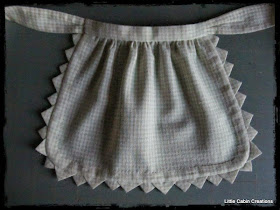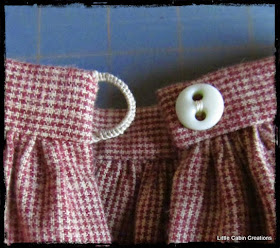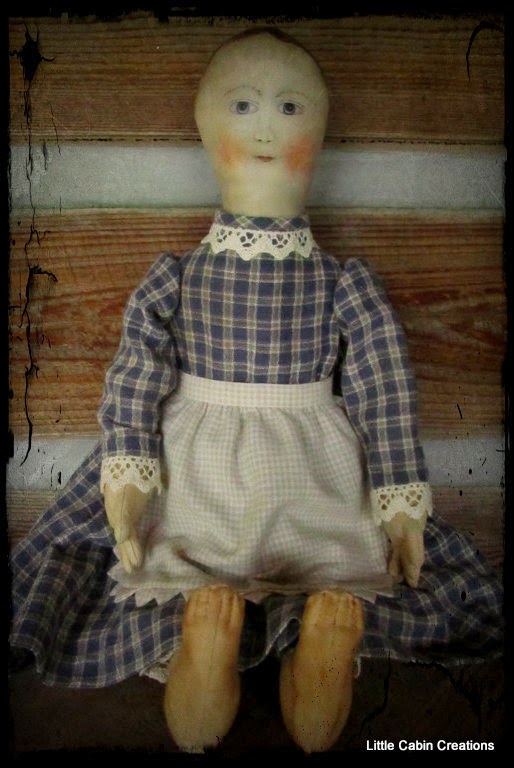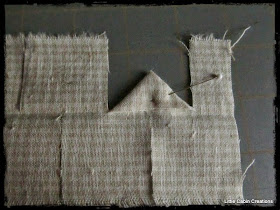I've finished stitching the clothing & bonnet for
the rag doll made by Martha Bishop. I've been
the rag doll made by Martha Bishop. I've been
calling her the "Martha doll" for so long, the
name has finally stuck. So, let me introduce
"Miss Martha".

name has finally stuck. So, let me introduce
"Miss Martha".

Her face is reminiscent of the fine antique
painted dolls. She has a soft aged patina
& a sweet countenance.
painted dolls. She has a soft aged patina
& a sweet countenance.
Her dress is made from a vintage
homespun that Martha sent along with the doll.
The fabric is so soft. I did cartridge
pleating & removed the basting stitches rather
than leave them in. I used the same
wool lace as I used on the under garments.
The fabric is so soft. I did cartridge
pleating & removed the basting stitches rather
than leave them in. I used the same
wool lace as I used on the under garments.
Her fingers and feet
These are old worn painted wooden buttons
are from my friend Cinders button box.
are from my friend Cinders button box.
Her apron is a homespun mini check
with double Van Dyke trim.
Here's the link on how to make this trim.
Apron With Double Van Dyke Trim

She has plenty of undergarments, plain & fancy.




I couldn't bear to cover these adorable feet.
with double Van Dyke trim.
Here's the link on how to make this trim.
Apron With Double Van Dyke Trim

She has plenty of undergarments, plain & fancy.




I couldn't bear to cover these adorable feet.
I stitched a simple unlined Italian straw poke bonnet.
The silk ribbon is a chestnut brown, but it doesn't
show up properly in these photos.

She is a fine addition to the cabin.
The silk ribbon is a chestnut brown, but it doesn't
show up properly in these photos.

Thank you Martha, she was so much fun to dress!
Martha Bishop Originals
~~~~~~~~~~~~~~~~~~~~~~~~~~~~~~~
Here are some of my favorite antique
one of a kind "rag" dolls. To me, it's
fine folk art & nothing about these
dolls was raggedy when they were made!

MAIDA TODAY

Theriaults

Britannica Kids

AAAWT Main House Auctions

EBAY

EBAY

Skinner
Countryandshakerantiques
Martha Bishop Originals
~~~~~~~~~~~~~~~~~~~~~~~~~~~~~~~
Here are some of my favorite antique
one of a kind "rag" dolls. To me, it's
fine folk art & nothing about these
dolls was raggedy when they were made!

MAIDA TODAY

Theriaults

Britannica Kids

AAAWT Main House Auctions

EBAY


Skinner
Countryandshakerantiques






















































































